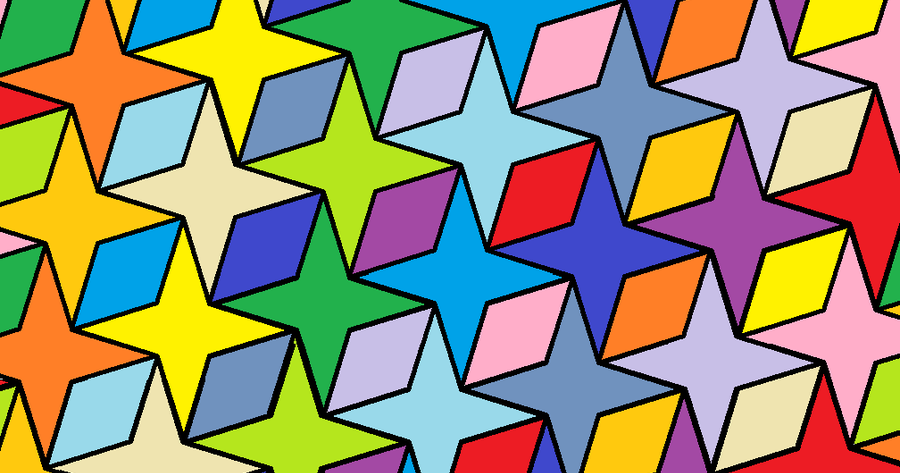
The Alhambra, a tiled palace constructed by the Moors in the 14th century features multiple beautiful tessellating mosaic patterns using a variety of geometric shapes.In ancient Rome, artists used small square “tessella” tiles to create large mosaic images, much in the way modern pixels are used to create images on a screen today.If you like your patterns a little more messy and wild, then irregular tessellations may be for you! You can form these tessellations out of any shape or shapes you can think of – so long you are able to create an interlocking pattern.Īrtists have been using tessellating patterns for many years! These tiling patterns have a little more flexibility than their regular cousins, but there are still only 8 patterns you can make into semi-regular tessellations! Irregular Tessellations However, these patterns can use two or more shapes to fill out their pattern. Semi-regular tessellations, like regular tessellations, only use regular polygons to make their patterns. This is because these shapes require interior angles that are divisors of 360° – only triangles, squares, and hexagons meet this criteria. Triangles, squares, and hexagons are the only shapes that can form tessellations on their own without assistance from other geometric gap-fillers. A very limited number of shapes can form regular tessellations – in fact there are only 3!


Let’s dive in and learn a little more! Regular TessellationsĪ regular tessellation is a shape that can be made by repeating a regular polygon. Tessellation patterns can be divided into 3 categories – regular, semi-regular, and irregular. In geometry, there is a special name for these kinds of patterns – tessellations! These are patterns of geometric shapes that repeat with no gaps or overlap. This article was okay, and it could use a little more information on tessellations.When you’re trying to learn new facts, repetitive review is a good way to get them to stick in your brain! Perhaps you could turn each fact into a geometric shape and make a fun repeating study guide! mathematical concepts involved in tessellation, reflection, transition, rotation, etc. Yeah, good article, but more information can be added, e.g. Human artists struggle to achieve something resembling the natural tessellation that bees are capable of making. I don’t know exactly how they go about building one, but they must have an excellent mathematical instinct. They fit together so that there are no gaps, making a tessellation. I don’t understand how the bees make the hexagons so perfectly. If you can get close enough to a beehive to look at one without getting stung, it is really interesting to observe. It would be something that not everyone has in their home.Ī honeycomb is one of the tessellation shapes that occurs in nature. I think that if I were going to use tile in my house, I would lay it out in the shape of one of these creative tessellations. They formed curving, twisting shapes that I wouldn’t have imagined in a tessellation, but there were no gaps between the shapes, so technically, they were tessellations. There were several examples where triangles and squares had been used together. Many of the examples were quite creative, and I never would have been able to think them up on my own. I saw several examples of tessellation in my daughter’s geometry book last semester. I think it helps my eyes and my mind wake up in the morning. I have my kitchen tiled like this, and to me, it really brightens up the place. It’s sort of an optical illusion, yet it is so simple at the same time. Staring at them for any length of time will make your eyes do strange things. I like the black and white squares that have been tilted to look like diamonds and have been alternated to play with your eyes. May 19, - While it would be cool to have a unique tiling tessellation, I actually prefer the old-fashioned kind found in the cafes and diners of years past. Three of the lizards are arranged so that they touch noses in the center, while the other three touch tails. We also have a lizard tessellation puzzle.

Two shades of brown were used, and a light brown elephant would lock trunks with a dark brown one, so my daughter always knew which ones to fit together. She had a lot of fun learning how they fit together, and they looked really cool once they were totally finished.

I got my daughter a couple of wooden jigsaw puzzles featuring animal tessellations.


 0 kommentar(er)
0 kommentar(er)
